Python GUI frameworks are a must for developers who want to build intuitive and user-friendly interfaces. As we look ahead to 2024, python is most trending language leading frameworks like Tkinter , PyQt, , and Kivy stand out, offering versatility, ease of use, and cross-platform capabilities . Graphical user interface (GUI) is one of the basic elements along with security and performance in any application. The key to achieving the right stability among these aspects is to make the user experience as intuitive and smooth as possible.
The purpose of this blog post is to assist people who are in the process of choosing the right framework for creating interactive GUIs and making use of the vast number of GUI frameworks that are available in the Python ecosystem.
It is a type of interface that uses images, icons and other visual elements to allow users to interact with a system or a program.
GUI is the first interface that users use when they access an application or a website. The quality of it is of great importance in determining the reputation and the user adoption of a platform. Typically, a user interface comprises an array of visual elements, including “icons”, “buttons”, “graphics”, “textual representations” and interactive components such as checkboxes and text input fields. These elements collectively contribute to the overall user experience of an application or website.
Leading Python GUI Frameworks for Developers
Here we describe the best Python GUI frameworks for their effectiveness and usefulness in software development projects.
PyGUI
This also called the Python GUI Project, is a framework that acts as an intermediary. The main importance is in the ability of the intermediary, which allows developers to create applications with Python’s special features by inserting the least amount of code between the created applications and the infrastructure of this Pythonic GUI Platform.
Besides, this GUI project is also compatible with “Windows machines”, “Unix-based” systems and “different versions” of “macOS” devices. The documentation for this lightweight framework is written in a way that makes it easy to create and develop UIs without the need for a lot of time spent on other GUI libraries. PyGUI is in line with Python and hence, it naturally fits both Python 2 and 3 versions.
PySimpleGUI
PySimpleGUI, created by Mike B in 2018, has notably made it easier for beginners to develop GUI in Python and get recognition in GUI Development. This easy-to-use model cuts the difficulties of the complicated GUI development options. Learning curve for the developers and the Python programmers is easy.
Through the skillful combination of the features of four GUIs, namely TKinter, Remi, Qt, and WxPython, this GUI simplifies the process of implementing boilerplate code, thus allowing beginners to create user interfaces subconsciously by using easy access to the different visual elements of the GUIs. The experienced developers are also given the chance to explore the full range of functionalities in it.
Kivy
It is the result of the combination of Python and Cython and it is an ideal tool for the construction of highly intuitive user interfaces, including multi-touch applications that are based on a natural user interface (NUI). Importantly, a NUI encourages user interaction by the way it automatically shows the interface functions intuitively.
Kivy allows the interface designers to code once and deploy the app on different platforms while using the support for OpenGL ES 2 to create modern and robust graphics and design techniques. Many fields are adopting Kivy, including Android and iOS platforms, as well as interfaces for Linux, Windows, Raspberry Pi, and macOS devices
Pyside2
Pyside2 or Qt for Python is a market-recognized application that boosts the existing Python applications with powerful features for developers. Besides, the community-supportive nature of Python and other software developers helps the collaboration of the exchange among the one million Python and other software developers. Currently, Pyside2 is a cross-platform Python module, which gives Python developers a wide range of libraries and tools for the creation of user interfaces that are dynamic and compelling. Video guides, examples, tutorials, and supplementary API documentation help users overcome concerns about the complexity of the documentation .Developers can quickly get to know the different aspects of this GUI framework and gain appreciation in the technologically advanced market.
Tkinter
This is first to greet many Python developers who are looking for the Tk GUI Toolkit. Tkinter provides a library of basic GUI widgets, and the developers can build user interfaces that are not only simple but also open-source.
There are some of the famous GUI widgets, each with its own degree of customizability, such as buttons for user input, check buttons for selections, file dialogs for file management, labels for textual information display, canvas for drawing and plotting and frames for structural flexibility within applications.
LibAvg
The idea of this platform was born by Alfred Bigler and was written in C++, this high-level development platform is good at helping developers create user interfaces that are optimized for modern touch-based devices. The most remarkable commercial applications are the ones like GlobalData, SimMed and C-Base Scanner which support Windows, Linux, and MacOS operating systems.
OpenGL and GPU shaders are used to automatically handle hardware acceleration, which is then used by developers to create visually rich graphics. Future users are advised to go through the installation instructions that are available on the official LibAvg website to use the full range of its features.
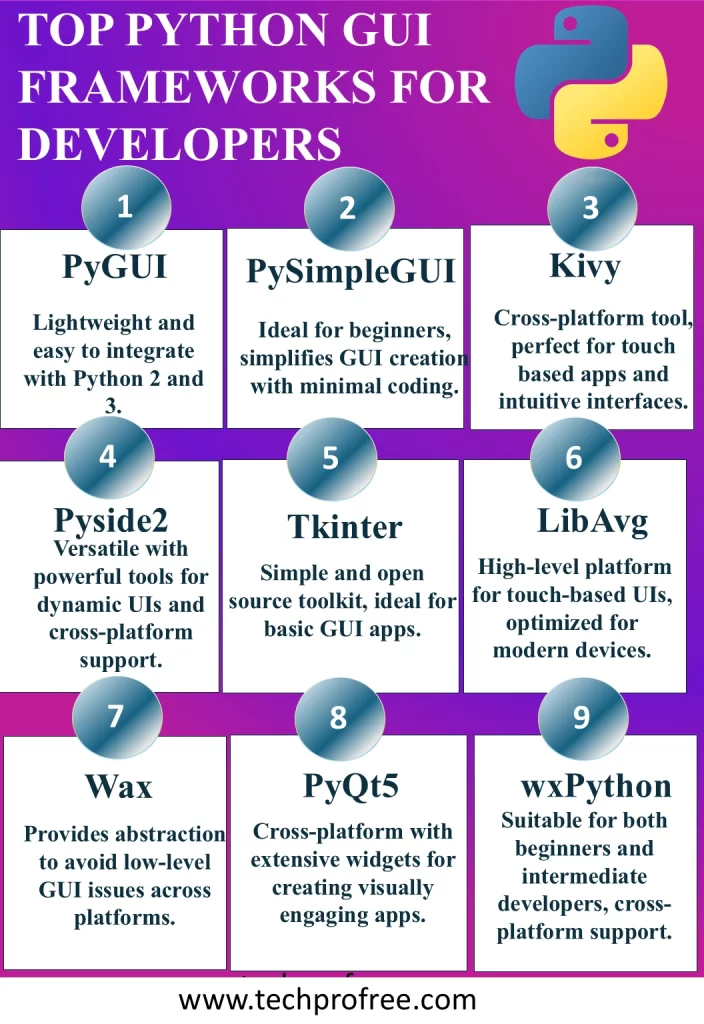
Wax
Wax changes the way of GUI development for Python developers by providing the abstractions that are necessary to avoid low-level GUI issues. This developer-friendly framework is the one that eliminates the need for direct interaction with operating systems like Windows, MacOS, or Linux. It is a framework that makes the creation of visually compelling effects through succinct code composition much easier. Designers get the advantage of faster and more efficient work, which helps them to make User Interfaces that are simple and flexible without the difficulties of complicated paradigms that are low-abstraction.
PyQt5
PyQt5 is used in cross-platform applications. It is a very versatile tool for the Python developers who can create applications for Mac OS X, Linux, Windows, Android and Raspberry Pi. PyQt5 has many GUI widgets such as sliders, list-boxes, and buttons, which enables developers to change the themes and create a unified aesthetic design, thus, increasing user engagement. The modular extensions of PyQt5 are the modularity that is the essence of the Python language. Strong development of applications from the small scale to the large scale is possible. Enthralled by its features? Initiate the creation of impressive UIs with a simple command. The PyQt5 package can be installed using the pip tool.
wxPython
wxPython turns out to be a suitable GUI framework that serves the needs of both the beginners and the intermediate Python developers. The computer system is used on Mac OS and various UNIX systems and it is still cross-platform compatible without any extra overhead. It is full of Pythonic widgets such as ComboBox, ToggleButton and StatusBar. Developers can easily make native UIs for Python applications with little modifications. The open-source nature of wxPython is the proof of its accessibility, which in turn creates a situation where there is a collaboration between the programmers and the code is improved and enhanced. Developers keen on harnessing the capabilities of wxPython can seamlessly initiate the installation process with the command.
Comparison of Top Python GUI Frameworks
Comparison of Top Python GUI Frameworks based on Features, Pros, and Cons
| Framework | Key Features | Pros | Cons |
| Tkinter | Built-in with Python, simple widgets | Easy to use, widely supported | Limited in terms of advanced features |
| PyQt5 | Advanced widgets, supports cross-platform development | Highly customizable, supports advanced UIs | Licensing issues, not entirely free for commercial use |
| Kivy | Multitouch support, cross-platform | Great for touch interfaces, modern UI features | Steeper learning curve |
| PySimpleGUI | Simplified GUI development | Easy for beginners, integrates multiple backends | Limited flexibility for complex UIs |
| PyGUI | Minimalist, lightweight, cross-platform | Simple interface, aligns well with Python | Limited features compared to other frameworks |
| Pyside2 | Qt for Python, cross-platform | Large set of features, supports both simple and complex UIs | Can be heavier to use for small projects |
| LibAvg | Touch-based interface, hardware acceleration with OpenGL | Optimized for modern touch devices, uses GPU shaders | Less widely used, fewer tutorials |
| wxPython | Native look and feel across platforms | Native support on multiple OS, flexible with good performance | Learning curve can be steep for advanced customizations |
| Wax | Abstraction for simplified GUI creation | Avoids low-level GUI issues, fast for prototyping | Lacks advanced features for large projects |
Performance Metrics of Top Python GUI Framework
Top Python GUI Framework Performance Metrics Based on Speed , Ease of Use , Scalability
| Framework | Speed | Ease of Use | Scalability Across Platforms |
| Tkinter | Moderate | Easy | Limited |
| PyQt5 | High | Moderate | Excellent |
| Kivy | High | Moderate | Excellent |
| wxPython | High | Moderate | Excellent |
| PySimpleGUI | Moderate | Easy | Moderate |
| LibAvg | High | Moderate | Excellent |
| PyGUI | Moderate | Moderate | Limited |
| Pyside2 | High | Moderate | Excellent |
| Wax | Moderate | Easy | Limited |
Future Trends of Python GUI Framework
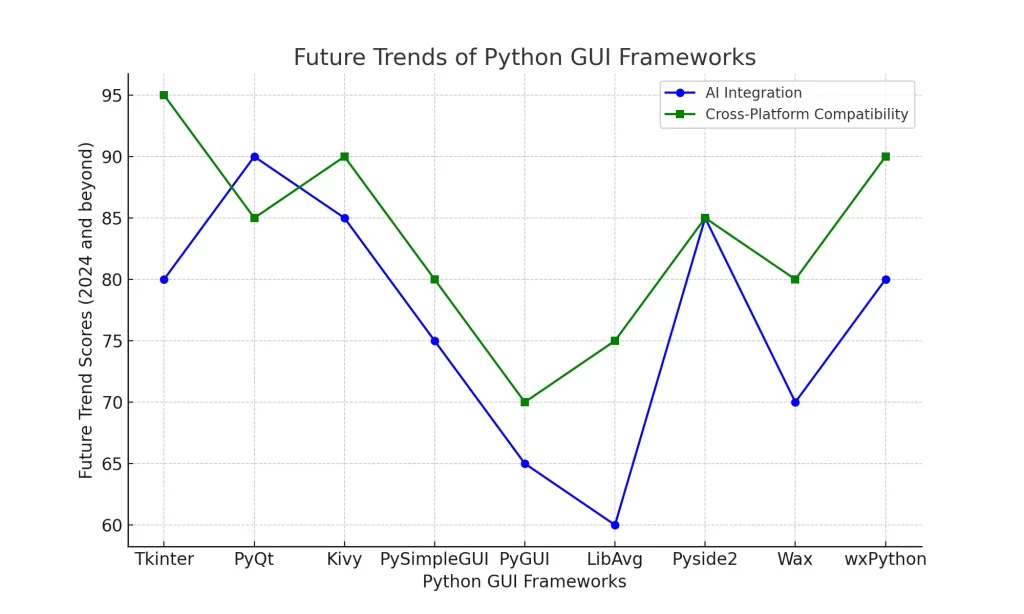
Conclusion
Python graphical user interface (GUI) frameworks enable developers to craft user interfaces that are intuitive and user-friendly. This article looked into the most popular options such as Tkinter and PyQt5. The future of these frameworks is bright, with the prospects of better cross-platform compatibility, AI and machine learning integration, a focus on the developer experience, and robust security features. As these developments are made, Python GUI frameworks will keep on being a very strong tool for the creation of outstanding user interfaces. Please, let us know in the comments which framework you like the most and tell us your opinion on the future of the Python GUI frameworks.

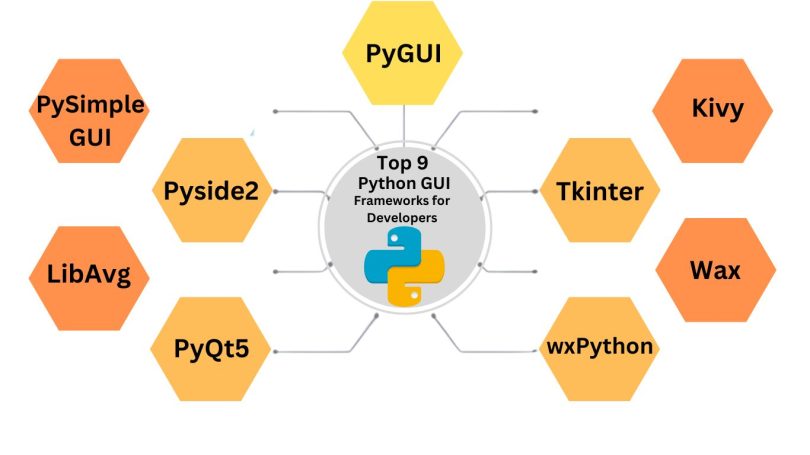
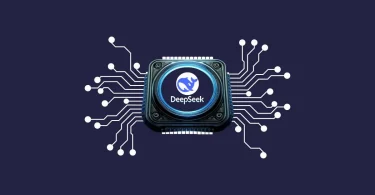
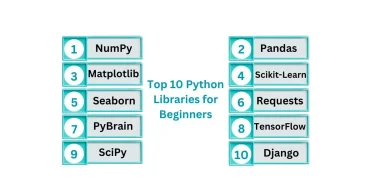
Leave a Comment